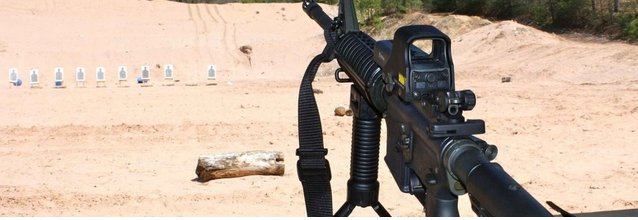The United States carries a deeply ingrained firearm traditions which has been existing ever since the nation’s founding. Even so, the legislative guidelines that regulate national firearms act pistol ownership and income have often been contentious and ever-altering. Probably the most significant bits of federal firearms laws will be the National Firearms Act (NFA) which had been transferred in 1934. The NFA has gone through numerous iterations consequently, making a little bit of frustration among those who would like to personal specific kinds of firearms. In this article, we are going to decode the NFA to be able to far better fully grasp what it is and the way it influences weapon management laws in the US.
The National Firearms Act (NFA) can be a national regulation that manages the management, ownership, and shift of certain kinds of firearms. The NFA packages forth particular demands for your ownership of firearms including machine weapons, short-barreled rifles and shotguns, suppressors, and destructive gadgets. The NFA also imposes a taxes in the making, shift, and importation of the firearms.
The NFA makes it prohibited to produce, transfer, hold, or exchange any weapon that slips within the NFA’s classification of Headline II weaponry without having suitable enrollment and transaction of your tax. To register a Name II handgun, an individual must full ATF Form 4, spend a $200 tax, and await authorization from your Bureau of Liquor, Cigarette, Firearms, and Explosives (ATF).
The NFA also needs the signing up for any suppressors or silencers, which can be defined as “any gadget for silencing, muffling, or diminishing the document of your handgun.” To register a suppressor, you need to document an ATF Type 1, pay out a $200 tax, and wait around for acceptance. This process might take several months, with many hanging around up to a year or more for authorization.
One of the more significant elements of the NFA is it requires all Title II firearms to have a serial number and also be labeled together with the title, city, and state of your producer. This gives the ATF to trace the exchange and possession for each Name II firearm. This requirement has become a subject matter of talk among those who have privacy concerns and never want their weapon ownership to become publicly available.
The NFA also contains specific provisions for your move of Title II firearms, that may simply be moved to people who are not forbidden from having firearms. Furthermore, the transfer needs to be approved by the ATF, together with a history verify and fingerprinting.
In short:
Learning the National Firearms Act can be quite a little bit tough because of its a lot of iterations and complex procedures. Regardless of where you stand on firearm acquisition and control, it is essential to know the regulations that control the utilization, possession, and exchange of firearms. The NFA’s needs for Label II firearms, such as unit guns and suppressors, are stringent and require a considerable amount of documents and holding out. Even so, for people who want to individual most of these firearms, pursuing the NFA’s demands is really a needed part in keeping agreement with federal government regulation. If you are a passionate pistol proprietor or simply curious about firearm regulations in america, spending some time to learn the NFA is an important step along the way.



